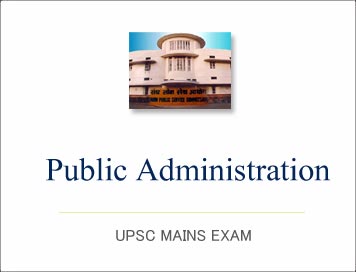(Online Course) Pub Ad for IAS Mains: Rural Development: Rural Development Programmes: Foci and Strategies (Paper -2)

(Online Course) Public Administration for IAS Mains Exams
Topic: Rural Development: Rural Development Programmes: Foci and Strategies
According to 2011 census, the country’s rural population is almost 83.25 crore (68.8% of total population). There has been wide consensus that the rural development should be inclusive and sustainable in order to alleviate the poverty. The tentative Gross Budgetary Support (GBS) for the Ministry of Rural Development for the Twelfth Five Year Plan (2012–17) is Rs. 44,3261 crore (against the Rs. 29,1682 crores of Eleventh Plan period) which includes the major programs. Although agriculture now accounts for only 14 per cent of Gross Domestic Product (GDP), it is still the main source of livelihood for the majority of the rural population. As such rapid growth of agriculture is critical for inclusiveness. Important structural changes are taking place within the sector and there are definite signs of improved performance. Agricultural growth has accelerated compared to the Tenth Plan and diversification is proceeding.
Employment Creation
Dependence on Agriculture in rural areas- Farmers are shifting to non-agricultural work and tightening the labour market in agriculture and putting pressure on farm wages. Focus area of the 12th Plan will be improving Viability of Small farms, Extended Information reach to farmers, investments both on-farm and in watershed development to enable better responses to depleting natural resources and weather risk, focus not just on production but also on farm incomes, stressing service delivery and suggesting encouragement of group activity with land and tenancy reforms put back on the agenda. Two major rural development programs focus on employment creation. MGNREGA offers the wage employment and National Rural Livelihoods Mission (NRLM) aims to generate the sustainable livelihood for the poor (BPL) by mobilizing them in to Self-Help Groups (SHGs) and creation of their Federations.
Planned spending on Agriculture
Rework architecture of the Plan spending on agriculture to make it more decentralised and flexible and more coordinated locally to improve total productivity of private resources by better service delivery in all areas from extension to input supply and marketing. Productivity is a combined function of prices and yields.
Housing for Poor
Housing is considered to be a basic need for everyone. Considering this, at present the Indira Awaas Yojana (IAY) provides financial assistance of Rs 70,000/- in plain areas and Rs 75,000/- in hilly/difficult/IAP districts (w.e.f. from 1st April 2013) to BPL families in rural area.
Social security and Pension
National Social Assistance Program (NSAP) is an integral element of India’s battle against poverty and distress to provide succour to senior citizens, differently abled people and others who have suffered due to mishaps in their life through unconditional cash transfers.
Rural road connectivity
Rural connectivity is a key component of rural development and poverty alleviation in India. The main mechanism for enhancing rural connectivity in a more systematic way has been the Pradhan Mantri Gram SadakYojana (PMGSY), a Centrally Sponsored Scheme (CSS), launched on the 25 December 2000.
Provision of credit at reasonable rates
For this, Public Land Banks (PLB) at Panchayat level are to be set up. Landowners could ‘deposit’ uncultivated land and receive regular payments from the PLB. The PLB could then lease out to small and women farmers or their collectives. Because of shrinking land assets of farmers FPOs have come up.
Public distribution system
The Public Distribution System is relevant for ensuring adequate quantity of quality food is made available at affordable prices to people to live a life with dignity.
